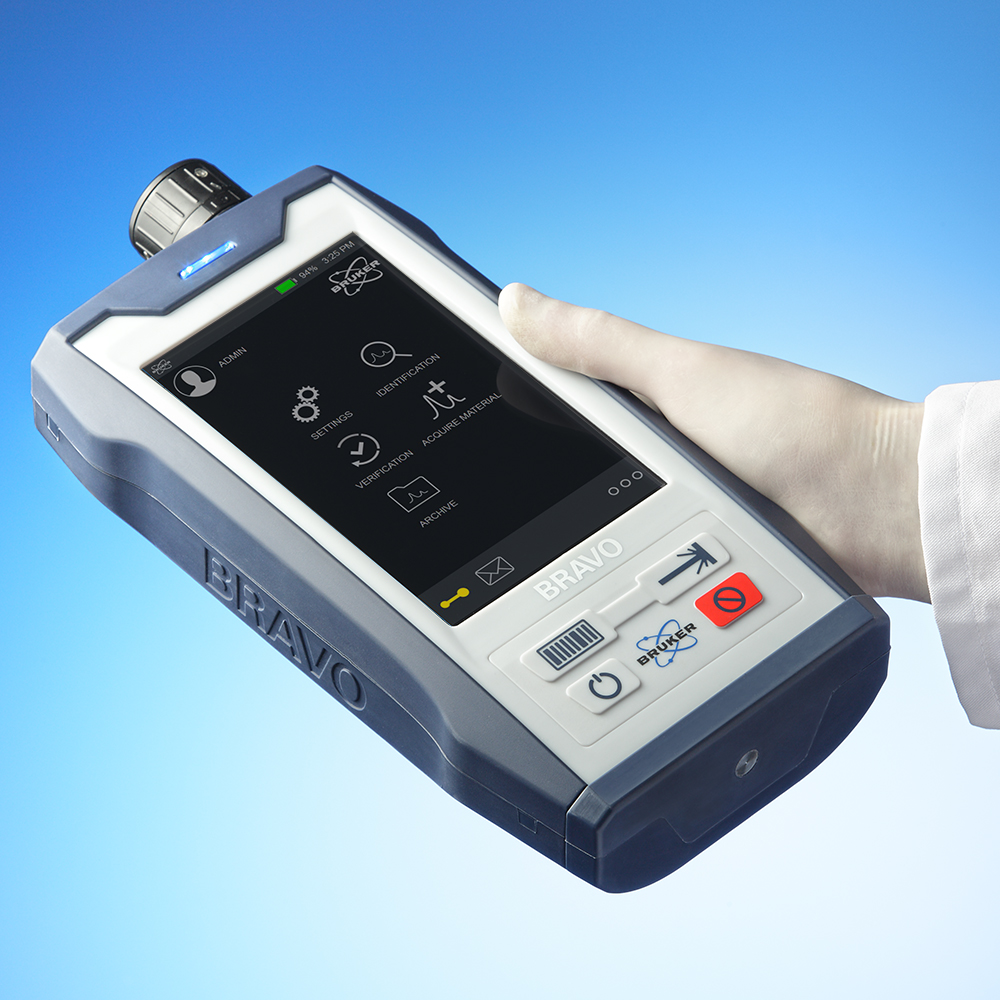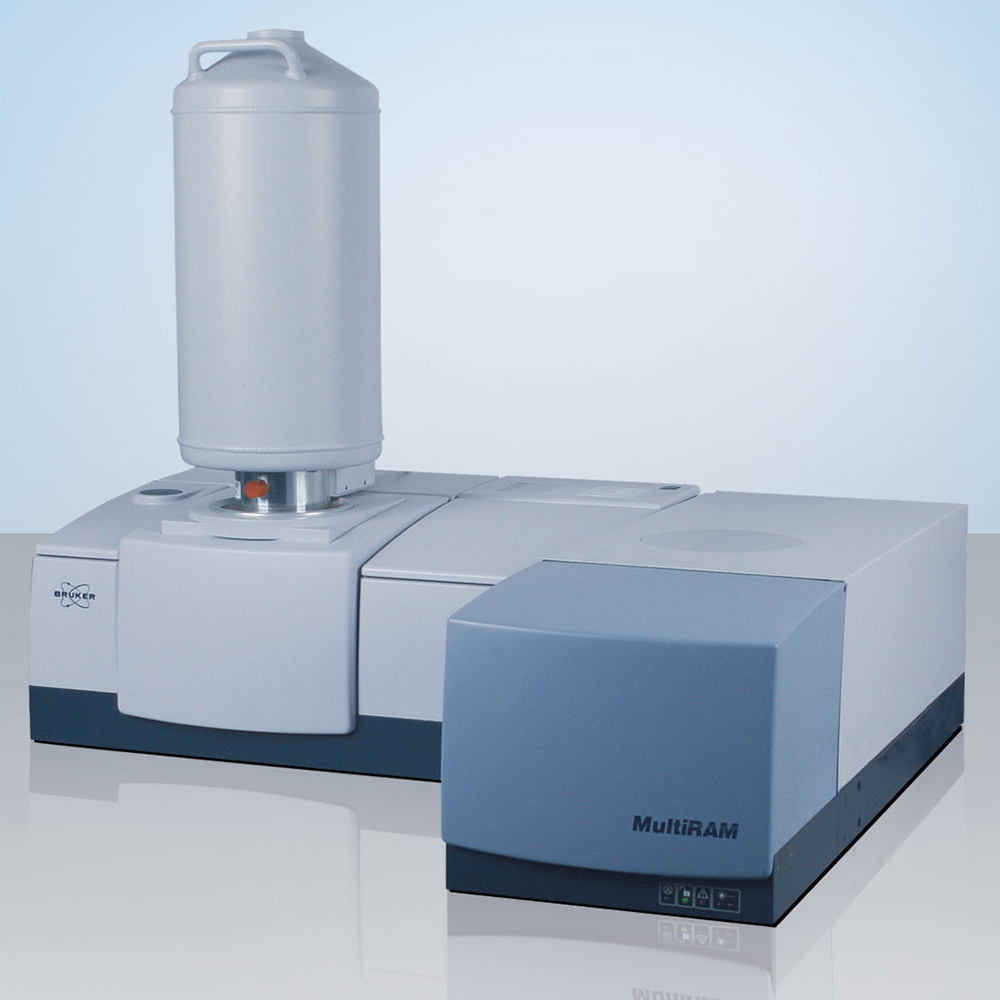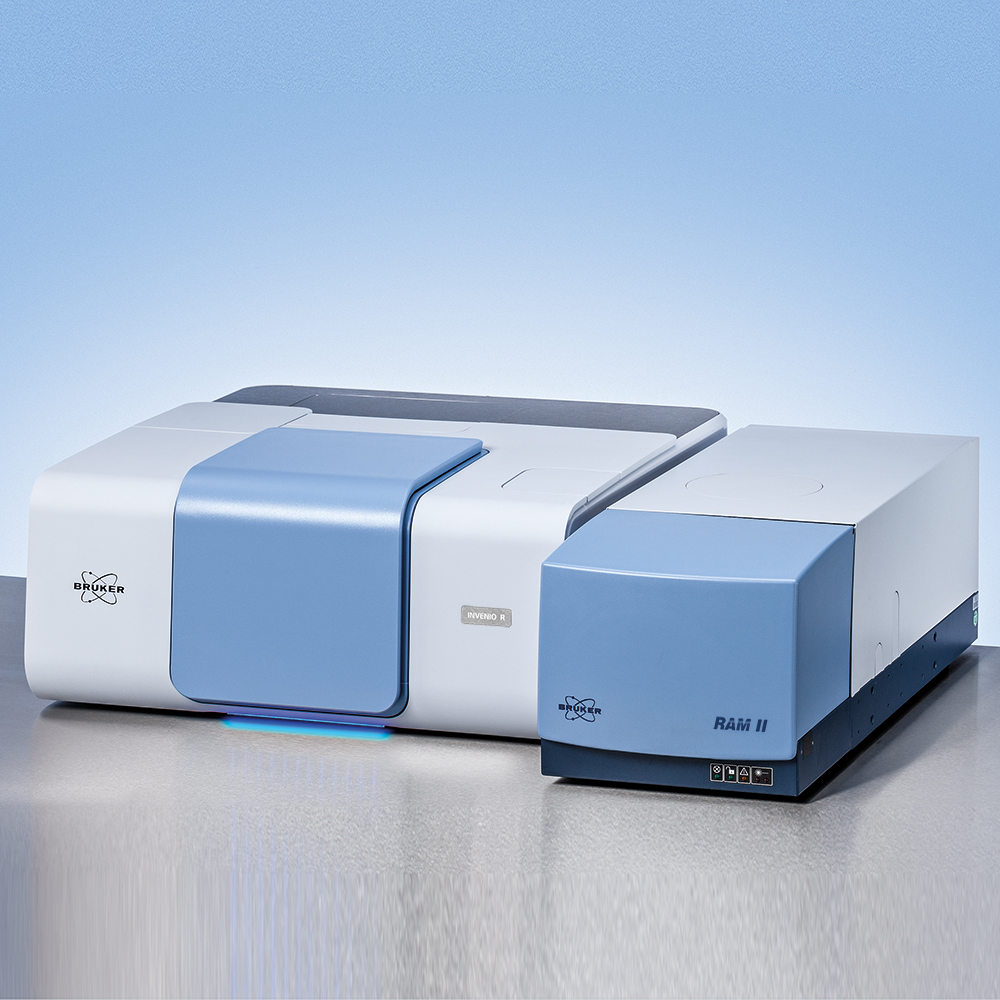Inside the Optics of Raman Spectroscopy
Inside a Raman spectrometer
Raman spectroscopy starts off with light emitted by a monochromatic laser. This light is directed on a sample and scattered off it. Some of the scattered light will be from Rayleigh scattering and some will be from Raman scattering. However, only the Raman scattered light is useful for chemical analysis, so all the scattered light is sent through a filter to remove the Rayleigh scattered light. The remaining Raman scattered light is then sent to the rest of the spectrometer.
Next the light needs to be separated so we can precisely determine how the light interacted with the sample. To separate the light, a diffraction grating is used. When light shines on a diffraction grating, the different wavelengths of light exit the diffraction grating in slightly different directions. This occurs because the angle of light as it exits the diffraction grating is directly related to the wavelength of the light.
From there, the separated light is sent to a CCD detector. Since each wavelength of light that exits the diffraction grating is travelling at a slightly different angle, each wavelength of light ends up at a different point on the detector. The detector then captures that information, essentially creating a “photo” of the Raman scattered light which is ultimately used to create the Raman spectrum.
Optimizing Raman experiments
Unfortunately, there’s not THE ONE "best" Raman set up that can efficiently analyze every sample. It is common to change the laser and diffraction grating for different experiments or even to have set ups with different kinds of detectors. Every sample is different and every experiment is exploring different questions, so adjusting these components makes it easier to obtain high quality spectra every time.
The laser
The most commonly used laser in Raman spectroscopy is a 532 nm green laser, as these lasers offer great sensitivity at a low cost. The shorter the wavelength of the laser, the higher the sensitivity will be. So, for experiments requiring very high sensitivity, a more expensive 488 nm blue laser should be used instead.
However, sensitivity isn’t the only factor that needs to be considered when selecting a laser. Lasers with a shorter wavelength are more likely to cause the sample to fluoresce, which interferes with the Raman spectrum. So if a sample is fluorescing when a 532 nm laser is used, a 785 nm infrared laser will often work better. Since the 785 nm laser won’t cause most samples to fluoresce, it’s a very versatile laser for most experiments at the cost of some sensitivity.
However, lasers of a longer wavelength tend to create more heat which could damage the sample. This can be mitigated by decreasing the power of the laser - which in turn unfortunately decreases the sensitivity of Raman further. That’s why a 633 nm laser is a good choice for some experiments, the wavelength is long enough to avoid fluorescence but shorter than the 785 nm laser so it won’t heat the sample up as much.
Raman laser comparison
| 488 nm | 532 nm | 633 nm | 785 nm | |
| Sensitivity | ✔ | ✔ | ✘ | ✘ |
| Cost | ✘ | ✔ | ✔ | ✔ |
| Fluorescence | ✘ | ✘ | ✔ | ✔✔ |
| Heat | ✔✔ | ✔✔ | ✔ | ✘ |
The grating
The diffraction grating inside the Raman spectrometer spreads the different wavelengths of Raman scattered light out in space before it reaches the CCD detector. How much or how little the light is spread out can be adjusted by changing the number of lines on the diffraction grating. Diffraction gratings with a higher line density, that is more lines per millimeter on the grating, will make the light spread out more.
Controlling how the light spreads across the detector is quite useful for examining different parts of the Raman spectrum. Examining the full Raman range (100 – 3500 cm-1) requires looking at a wide range of wavelengths. That's why this requires a grating with a lower line density, since diffraction gratings with a lower line density don’t spread the light out as much so a wider range of light can reach the detector.
Examining a small part of the spectrum requires a diffraction grating with a higher line density which causes the light to spread out more. This means less light will be reaching the detector overall, but we can examine specific parts of the spectrum in more detail - e.g. with higher spectral resolution.
If the laser is changed for a Raman experiment, there’s a good chance the diffraction grating needs to be changed too. Though the Raman shifts for a sample will always be the same, the wavelength of the laser impacts the wavelength of Raman scattered light that reaches the detector.
If a laser with a shorter wavelength is used, the resulting Raman scattered light will have light with wavelengths that are close together. This means lasers with a shorter wavelength need a diffraction grating with a higher line density to spread the light out more across the detector. Lasers with a longer wavelengths create scattered light that is more spread out so a diffraction grating with a lower line density should be used.
With how often gratings might need to be changed, it should be noted that gratings are very delicate and can be easily ruined if they come in contact with solvents or even oil from fingerprints. Luckily, modern Raman spectrometers have multiple gratings on a turret so the grating can be changed automatically.
It’s also worth noting that the Raman spectrometer should always be calibrated after the grating is changed. This is because the grating turret might not always rotate to the same spot, which means the light coming off the diffraction grating might end up on slightly different parts of the detector. To calibrate the spectrometer to account for this, a reference sample with known peaks is measured. The typical references are a neon, argon, or mercury lamp.
Conclusion
Optimizing a Raman experiment is often a balancing game. Different lasers have different strengths and weaknesses. Choosing a diffraction grating or other component in the spectrometer that increases the resolution of the spectrum usually decreases the sensitivity. However, keeping all these factors in mind when setting up an experiment will lead to high quality spectra for a wide range of samples.


